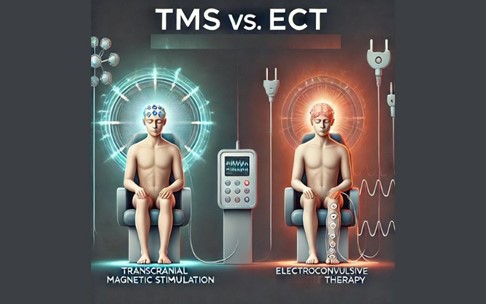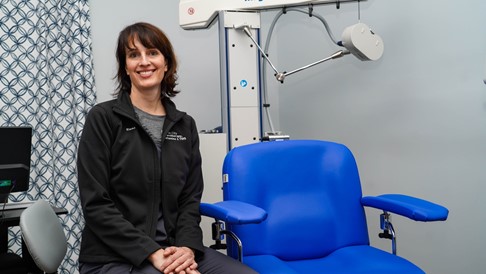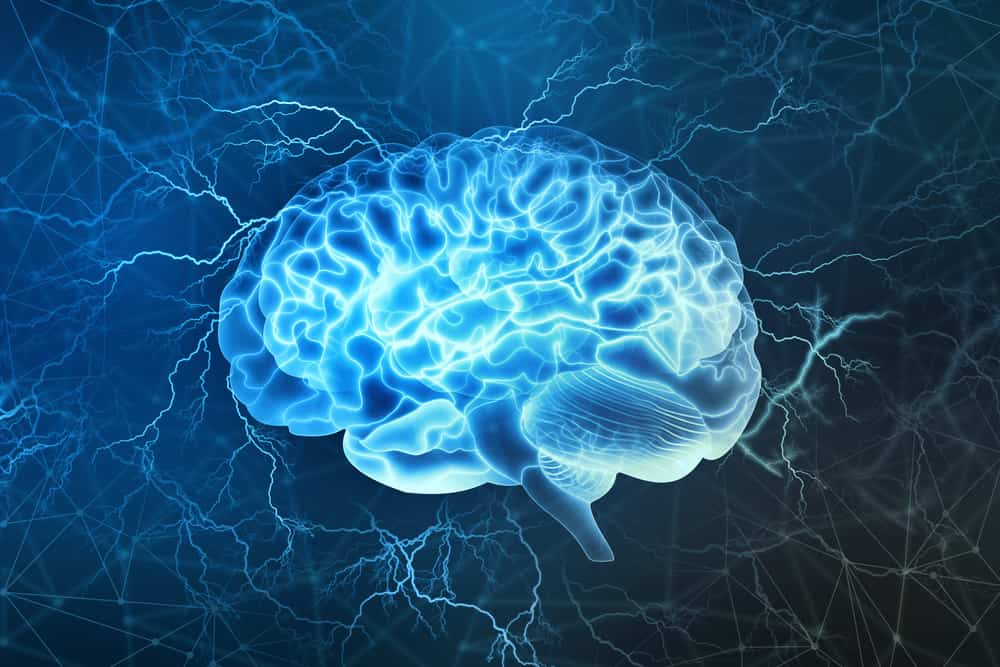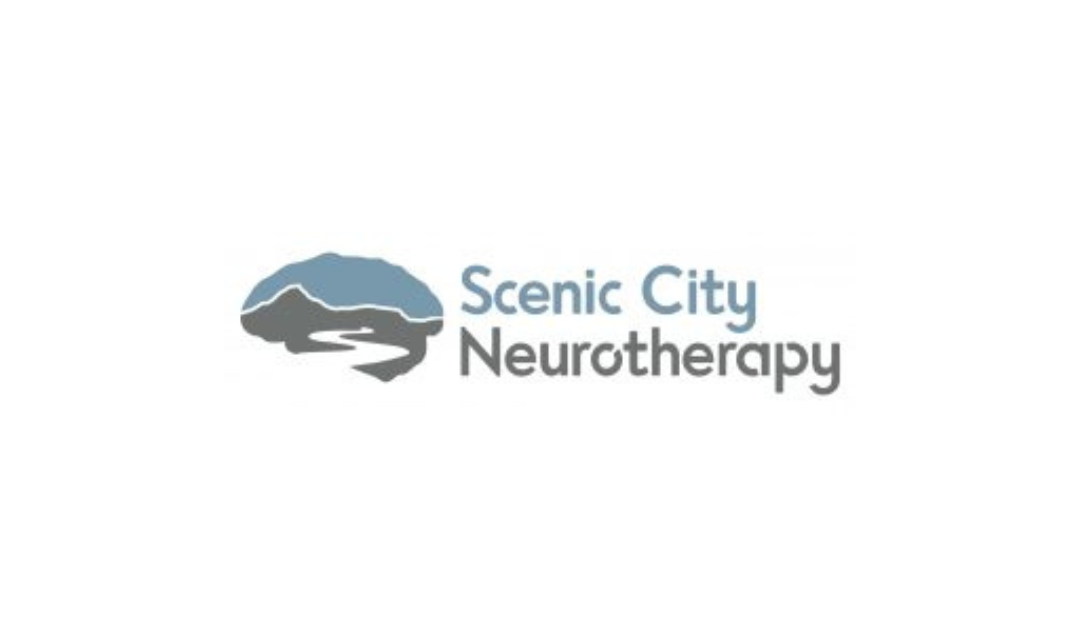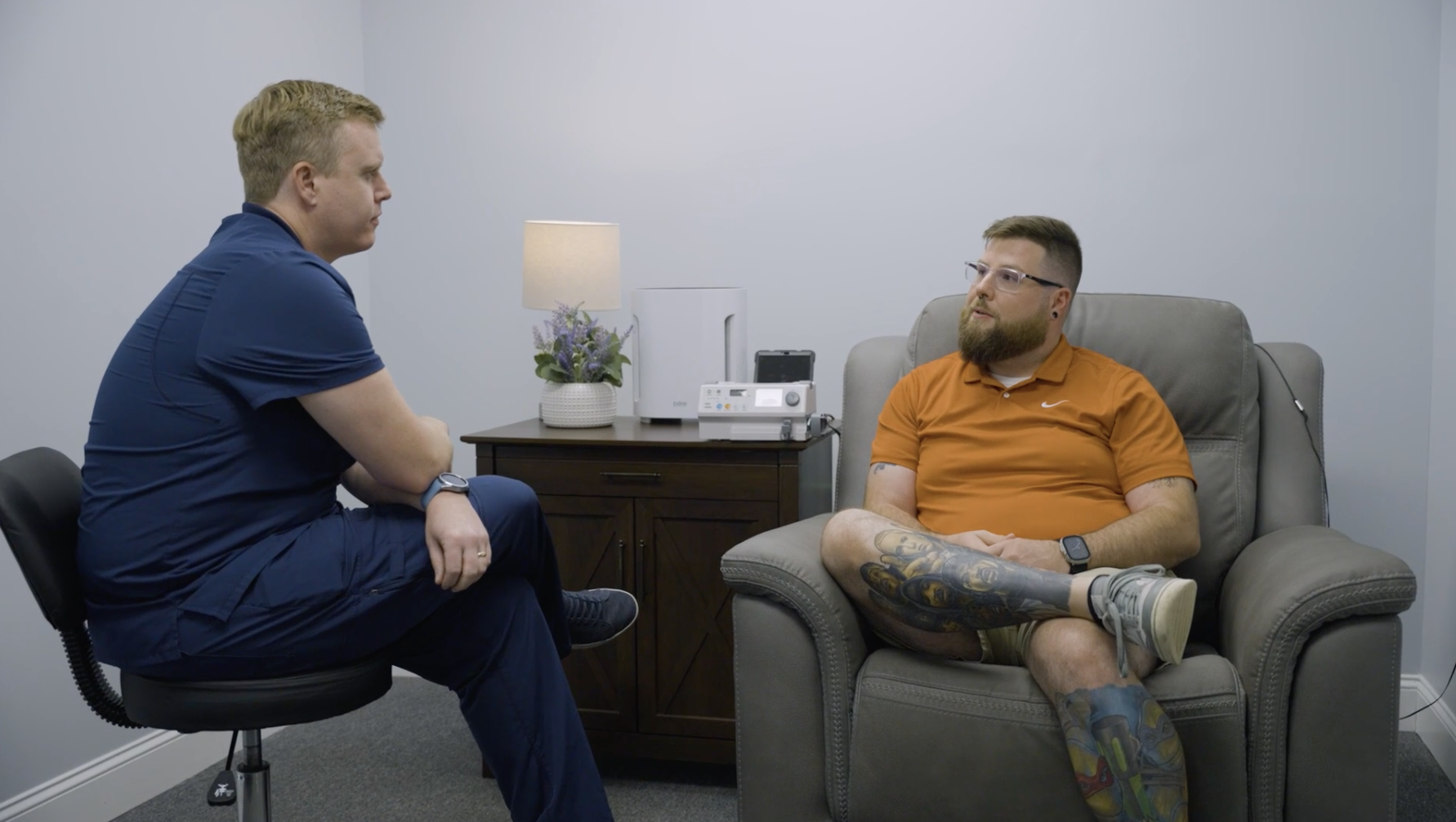Written by Katherine Kessler
When it comes to treating severe depression and other mental health disorders, two prominent treatment options often come into consideration: Transcranial Magnetic Stimulation (TMS) and Electroconvulsive Therapy (ECT). Both therapies have shown significant effectiveness for individuals who have not responded to traditional treatments like medication or psychotherapy. However, while they share some similarities, TMS and ECT differ considerably in their mechanisms, side effects, and patient experiences. This blog will explore the key differences between these two treatments, providing a comprehensive understanding for those considering either option.
Introduction To TMS and ECT
The National Institute of Mental Health estimates that over one in five U.S. adults, about 59.3 million people in 2022, experience mental illness. With the growing interest in advanced treatments for mood disorders, TMS and ECT have emerged as effective options. But how do you determine which one is right for you?
This blog will compare TMS and ECT, two widely recognized brain stimulation treatments. We will examine their methods, benefits, side effects, and ideal candidates. Understanding these differences will help you make an informed decision in consultation with your healthcare provider.
What is Transcranial Magnetic Stimulation (TMS)?
Transcranial Magnetic Stimulation (TMS) is a noninvasive procedure that uses magnetic fields to stimulate nerve cells in specific regions of the brain. It is most commonly used to treat depression, particularly in patients who have not responded well to antidepressant medications.
How Does TMS Work?
TMS targets the prefrontal cortex, a region of the brain associated with mood regulation. An electromagnetic coil is placed on the scalp during the procedure, delivering magnetic pulses to stimulate neural activity. This stimulation encourages neuroplasticity, the brain’s ability to adapt and rewire, and enhances communication between different brain parts. The goal is to enhance mood and cognitive function while alleviating depressive symptoms.
Key Advantages of TMS:
- Non-Invasive: TMS is a non-invasive form of brain stimulation that occurs externally, without any intrusion into the body.
- Minimal Side Effects: TMS is well tolerated as compared to the side effects often seen with medications and ECT. Potential side effects of TMS include mild headaches and scalp irritation.
- Targeted Treatment: TMS allows for precise targeting of specific brain regions involved in mood regulation, leading to a more focused and effective treatment.
- Limited Drug Interactions: TMS does not involve taking medications, which means there are no potential interactions with other drugs.
- Outpatient Treatment: TMS is conducted on an outpatient basis, allowing individuals to receive treatment and return to everyday activities.
- Improvement: TMS therapy addresses the underlying source of depressive symptoms, leading to gradual improvements in mood over the course of treatment.
Who is TMS For?
TMS is particularly beneficial for patients with treatment-resistant depression who have not found relief through traditional antidepressants or therapy. It is also an option for individuals who prefer to avoid the side effects of medication or are seeking a non-invasive treatment option.
What is Electroconvulsive Therapy (ECT)?
Electroconvulsive Therapy (ECT) is a more invasive treatment that has been used for decades to treat severe depression, bipolar disorder, schizophrenia, and other mental health conditions. ECT was first developed in the 1930s, and while it has remained a treatment option, advancements in medical science have introduced less invasive alternatives with fewer side effects, such as TMS (Transcranial Magnetic Stimulation) and Ketamine Infusion Therapy.
How Does ECT Work?
ECT sends small electrical currents through the brain, intentionally triggering a brief seizure. These electrical impulses affect the brain’s neurotransmitter systems, which can result in improvement of depressive symptoms. The procedure is performed under general anesthesia.
Key Points on ECT:
- Effectiveness: ECT has historically been regarded as one of the most effective treatments for severe depression, and many patients still find significant relief after just a few sessions. However, it’s essential to carefully evaluate the benefits and drawbacks of this treatment, while also considering other viable options that may have fewer long-term side effects.
- Long-Term Outcomes: The Cleveland Clinic notes that this procedure may produce only short-term effects, and some individuals who undergo ECT may require follow-up treatments. These “maintenance” sessions might be needed for several weeks or months, typically occurring weekly or even every few months. Combining medication with ECT can assist in managing these ongoing needs.
- Potential Side Effects: ECT can lead to side effects such as neck and body aches, muscle spasms, memory loss, and cognitive deficits, including confusion or psychosis.
Who is ECT For?
ECT is typically considered when depressive symptoms do not respond to psychotherapy or antidepressant medications. However, due to its invasive nature and potential side effects, it is often considered a last resort treatment.
TMS vs. ECT: Comparing the Two Treatments
While both TMS and ECT have proven effective for treating depression, there are significant differences between the two therapies. Here, we will compare them across several key factors.
1. Mechanism of Action
- TMS: Uses magnetic pulses to stimulate nerve cells in the brain, promoting neuroplasticity and improving communication between brain regions.
- ECT: Involves inducing a controlled seizure by applying electrical currents to the brain, which alters brain chemistry and the way areas of your brain work.
2. Invasiveness
- TMS: Non-invasive. There is no need for anesthesia, surgery, head caps, or hospitalization.
- ECT: Invasive. Requires general anesthesia and induces a seizure, necessitating a hospital setting.
3. Side Effects
- TMS: Generally mild side effects, such as scalp irritation and mild headaches. No cognitive side effects like memory loss.
- ECT: Can cause temporary confusion, memory loss, and physical side effects such as muscle soreness or nausea due to anesthesia.
4. Treatment Duration
- TMS: At Scenic City Neurotherapy, the duration of treatment sessions depends on the protocol you and your provider choose for you.
- Repetitive Transcranial Magnetic Stimulation (rTMS) involves one treatment per day, Monday-Friday, for 6 weeks with a 3-week wean, totaling 36 sessions. This option is good for those who cannot take off time from work or daily responsibilities. The time commitment is low. No recovery time is needed.
- Intermittent Theta Burst Stimulation (iTBS), or the SNT Protocol, is an aggressive 5-day protocol developed by Stanford Department of Psychiatry which allows patients to undergo 10 sessions/day for five consecutive days, totaling 50 iTBS sessions. You’ll have a 50-minute gap between daily treatments, with nearby parks, restaurants, and stores within a ten-minute drive. Each patient receives a private room with two chairs, and you can bring a supportive friend or family member. You’ll have access to our kitchen or can have food delivered during your visits.
- ECT: Sessions are conducted 2-3 times weekly, and treatment typically lasts several weeks. Following each session, a recovery period is necessary.
5. Efficacy
- TMS: Effective for treatment-resistant depression, especially for patients who do not respond to medication.
- • rTMS(ClassicTMS)reports a patient remission of depressive symptoms of 70%.
- • iTBS(SNTProtocol)reports a greater than 90%rate of remission of depressive symptoms.
- ECT: Known for its efficacy in severe cases of depression. ECT is more likely to be used in cases where rapid intervention is required.
6. Memory and Cognitive Effects
- TMS: No known effects on memory or cognition.
- ECT: This can cause memory loss and cognitive side effects, which is one of the major concerns for patients considering this treatment.
7. Cost and Accessibility
- TMS: Typically more affordable than ECT, especially for patients with insurance coverage. TMS does not require hospital stays, reducing overall costs.
- ECT: Due to the need for anesthesia, hospital monitoring, and recovery time, ECT is generally more expensive. However, it can sometimes be covered by insurance for severe cases of depression.
TMS and ECT: Which One is Right for You?
Deciding between TMS and ECT depends largely on your condition’s severity, medical history, and personal preferences. Here are a few key considerations:
- If you prefer a non-invasive treatment with minimal side effects, TMS may be the better option, especially if your depression.
- If you are seeking long-term relief from depressive symptoms, TMS could serve as a more effective solution.
- If cognitive side effects are a concern, TMS may be preferable, as it does not carry the risk of memory loss or confusion associated with ECT.
- If cost is a major factor, TMS is typically more affordable and accessible, especially for patients without insurance coverage for ECT.
Conclusion
Both Transcranial Magnetic Stimulation (TMS) and Electroconvulsive Therapy (ECT) are tools for treating depression and other mental health disorders, especially in cases where traditional treatments have failed. The choice between these treatments ultimately depends on your needs and circumstances.
If you or a loved one are exploring TMS or ECT, it’s crucial to consult with a healthcare provider to determine the best option for your needs. To take the next step, schedule a complimentary consultation with our Care Team at www.ScenicCityNeuro.com or call 423-228-0579.
